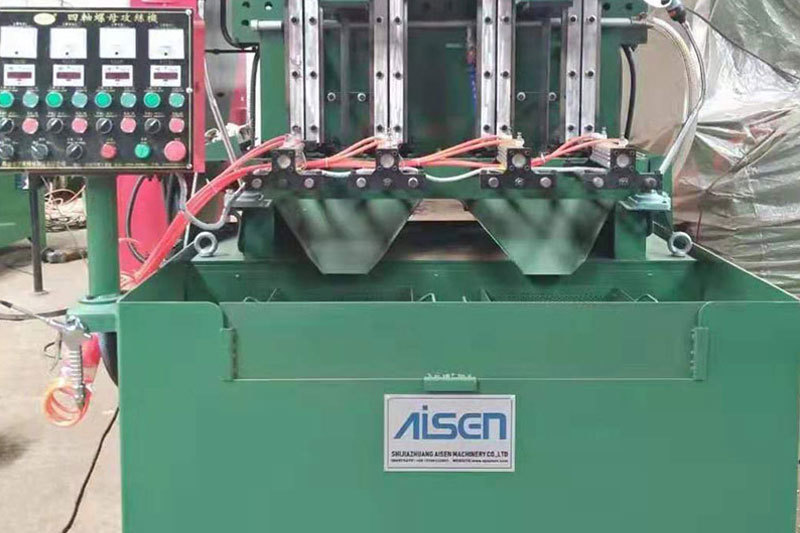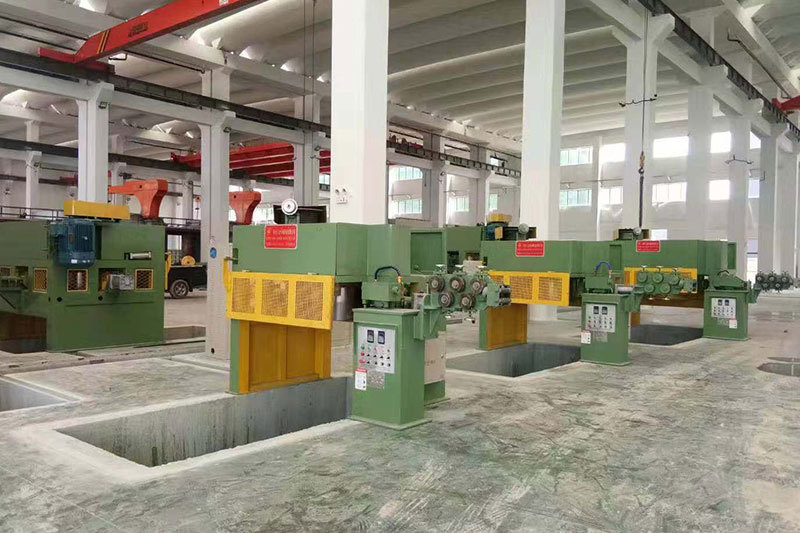Exploring the Mechanics Behind Hexagon Square Rod Straighteners: A Deep Dive into Metal Processing Technology
Summary:
Exploring the Mechanics Behind Hexagon Square Rod Straighteners
Introduction to Hexagon Square Rod Straighteners
In the metalworking industry, achieving precision and quality is paramount. Hexagon square rod straighteners have emerged as essential machinery designed to rectify the shape of metal rods, ensuring they meet stringent specifications. These machines play a crucial role in enhancing the

Exploring the Mechanics Behind Hexagon Square Rod Straighteners
Introduction to Hexagon Square Rod Straighteners
In the metalworking industry, achieving precision and quality is paramount. Hexagon square rod straighteners have emerged as essential machinery designed to rectify the shape of metal rods, ensuring they meet stringent specifications. These machines play a crucial role in enhancing the accuracy and consistency of metal products.
Understanding the Need for Metal Straightening
Metal rods, especially those used in critical applications, often suffer from deformation during production or processing. This deformation can result from factors such as stress, temperature changes, or mechanical handling. Straightening these rods is vital for several reasons:
Quality Control and Precision
Straightened rods exhibit improved dimensional accuracy, which is essential for their integration into various applications. Ensuring that rods meet precise specifications guarantees the quality of the final products.
Operational Efficiency
Machines operating with straightened rods experience less wear and tear, reducing maintenance costs and downtime. This increased efficiency translates into higher productivity and profitability.
How Hexagon Square Rod Straighteners Work
Hexagon square rod straighteners operate on a fundamental principle: applying force to eliminate bends and twists in the metal. Understanding the mechanics behind these machines involves delving into their key components and functionalities.
Key Components of Hexagon Square Rod Straighteners
1. **Feeding Mechanism**: The feeding mechanism controls the entry of rods into the machine. It ensures a smooth and consistent feed to optimize the straightening process.
2. **Straightening Rolls**: These are the heart of the straightener. Typically made from high-strength steel, straightening rolls exert pressure on the rod at specific angles, effectively reshaping it.
3. **Adjustment System**: The adjustment system allows operators to modify the alignment and pressure applied by the rolls. This flexibility is crucial for accommodating different rod sizes and materials.
4. **Control Panel**: Modern straighteners come equipped with user-friendly control panels that enable precise monitoring and adjustments during the straightening process.
The Straightening Process Explained
The straightening process typically involves several stages:
1. **Rod Entry**: The rod is fed into the machine, where sensors detect its dimensions and material properties.
2. **Initial Straightening**: As the rod passes through the straightening rolls, initial bends are corrected. This step often involves slight adjustments in pressure.
3. **Final Adjustments**: After the initial straightening, the rod is subjected to additional passes through the rolls to ensure it meets the required specifications.
4. **Quality Check**: Once straightened, rods undergo a quality check to confirm that they meet industry standards.
Types of Hexagon Square Rod Straighteners
Hexagon square rod straighteners come in various designs tailored to specific manufacturing needs. Here are some common types:
Manual Straighteners
Manual straighteners require operator intervention for adjustments and feeding. They are suitable for small-scale operations where precision is less critical.
Automatic Straighteners
Automatic straighteners are equipped with advanced control systems that manage the entire straightening process. They are ideal for high-volume production environments, offering enhanced efficiency and consistency.
Hydraulic Straighteners
Hydraulic straighteners utilize hydraulic pressure to exert force on the rods. This type of straightener is particularly effective for thicker and more resilient materials.
Advantages of Using Hexagon Square Rod Straighteners
Investing in hexagon square rod straighteners offers numerous advantages for manufacturers:
Increased Productivity
With their ability to straighten rods quickly and efficiently, these machines significantly enhance production rates, allowing manufacturers to meet growing demand.
Reduced Waste
Straightening rods reduces the likelihood of defects, minimizing waste and ensuring that materials are utilized effectively.
Enhanced Product Quality
Consistently straightened rods contribute to high-quality finished products, improving customer satisfaction and reducing returns.
Applications of Hexagon Square Rod Straighteners
Hexagon square rod straighteners find applications in various industries, including:
Construction
In the construction industry, straightened rods are used in the fabrication of rebar, structural components, and fixtures, where precision is vital for safety and stability.
Aerospace
Aerospace components require exact specifications, making straightened rods essential for the manufacturing of airframes and other critical structures.
Automotive
The automotive sector relies on straightened rods for chassis components, ensuring durability and reliability in performance.
Maintenance Tips for Hexagon Square Rod Straighteners
Regular maintenance is crucial for ensuring the longevity and performance of straighteners. Here are some essential tips:
Routine Cleaning
Keep the machine clean to prevent debris buildup, which can affect performance. Regularly check and clean the feed mechanisms and rolls.
Lubrication
Proper lubrication of moving parts is essential to reduce friction and wear. Follow the manufacturer’s guidelines for lubrication intervals.
Inspection
Conduct routine inspections to identify wear and tear on components. Early detection of issues can prevent costly repairs and downtime.
Choosing the Right Hexagon Square Rod Straightener
Selecting the appropriate straightener involves considering several factors:
Material Type
Different materials require varying levels of force and adjustments. Consider the types of rods to be straightened.
Production Volume
Evaluate the expected production volume. Automatic straighteners are better suited for high-volume needs, while manual options may suffice for smaller operations.
Frequently Asked Questions (FAQs)
1. What is the typical lifespan of a hexagon square rod straightener?
The lifespan of a hexagon square rod straightener can range from 10 to 20 years, depending on usage and maintenance practices.
2. Can hexagon square rod straighteners handle different sizes of rods?
Yes, most straighteners have adjustable settings that allow them to accommodate various rod sizes and materials.
3. How do I know when my straightener needs maintenance?
Signs that your straightener needs maintenance include unusual noises, decreased performance, and visible wear on components.
4. Are there any safety features in hexagon square rod straighteners?
Many modern straighteners come equipped with safety features such as emergency stop buttons and safety shields to protect operators.
5. What are the energy requirements for operating a straightener?
Energy requirements vary based on the machine type and model. Consult the manufacturer’s specifications for detailed information.
Conclusion
Hexagon square rod straighteners are indispensable tools in the metal processing industry, ensuring that rods meet the precise specifications required for various applications. Understanding their mechanics, types, and advantages can help manufacturers make informed decisions when selecting equipment. By investing in quality straightening technology, businesses can enhance their operational efficiency, reduce waste, and improve product quality, ultimately leading to greater customer satisfaction and profitability. Embracing these innovations allows for better performance in an increasingly competitive marketplace.
PREVIOUS:
Latest News
AISEN Four axis nut tapping machine ready for shipment to Russia
Four axis nut tapping machine for DIN934 M8,M10 Standard hex nut is ready for shipping to Russia by land transportation.
AISEN machinery inverted wire drawing machine
We hope to cooperate with more customers for mutual development and benefits. You are welcome to contact us









